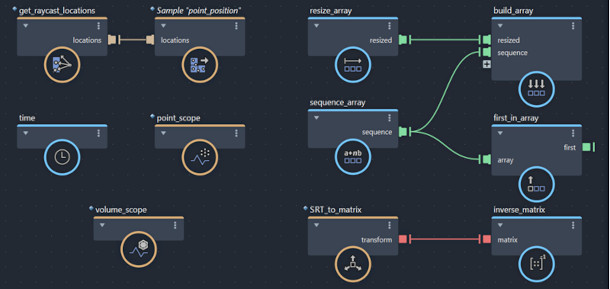Autodesk ships Maya 2022.3
The new Retarget mode added to the Morph deformer in Maya 2022.3 makes it possible for character animators to retarget deformation-based facial animation from on character to another.
Autodesk has released Maya 2022.3, the latest version of its 3D modelling and animation software.
The release updates Maya’s Jiggle and Morph deformers, including a new option to retarget animation from one character to another; and adds new quality-of-life options to the sculpting tools.
Outside the core software, the Arnold, Bifrost, Substance and USD plugins all get significant updates.
New Retarget and Mirror modes in the Morph deformer for facial animation
The main changes in Maya 2022.3 itself are to the software’s deformers, with character riggers and animators getting several new options for the Morph deformer.
A new Retarget mode makes it possible to retarget animated displacement from source to target geometry with the same topology: for example, to transfer facial animation from one character to another.
It is also now possible to mirror morph deformations from one side of a model to another: for example, to mirror expressions from one side of a character’s face to another.
New Tangential Constraints controls prevent vertices moving inside or outside deforming surfaces, making it possible to create a “smooth slippery effect“.
Maya’s Jiggle deformer, with (right) and without (left) GPU acceleration and cached playback support.
GPU support for the Jiggle deformer
In addition, the Jiggle deformer is now GPU-accelerated, and works with Cached Playback. You can see the resulting improvement in viewport performance in the image above.
UX has also been improved when working with deformer weight painting, making it easier to see which vertices are selected when weight visualization is enabled.
Quality of life improvements to sculpting and 3D modelling
In the sculpting toolset, the Relax, Smear, Pinch, Grab and Smooth brushes now automatically constrain to live surfaces. It is possible to use a separate surface as a constraint while sculpting.
The Multi-Cut tool now displays the percentage for full edge loop cuts.

New features in the Bifrost, USD, Substance and Arnold plugins
Outside the core software, multiphysics plugin Bifrost for Maya gets a number of UX improvements, with Bifrost 2.3.1 introducing new icons (shown above) to make it easier to see at a glance what a node does.
In addition, parameters for several types of nodes can now be read directly from the node graph.
The new USD for Maya plugin gets a number of new features, with USD for Maya 0.13 adding support for manipulating USD prims via Maya’s Channel box.
The previous update, USD for Maya 0.12, added support for importing and exporting lights.
The Substance in Maya plugin, for editing materials in Substance .sbsar format inside Maya, has also been updated, although at the time of writing, there is no detailed changelog for version 2.2.1.
According to Autodesk’s summary, the update introduces “the newest Substance Engine 8.3.0, with support for assets from Substance 3D Designer, Substance 3D Assets, and Substance 3D Sampler”.
“Artists now have the ability to render scenes directly with multiple versions of [Autodesk’s Arnold renderer] and an improved user interface that provides the ability to manage and edit renderer workflows.
The Arnold integration plugin itself gets support for the new features introduced in Arnold 7.0 in October, including support for Intel’s Open Image Denoise, and a new LUT mode for the tonemapping imager.
MtoA 5.0, released at the time, also adds support for parallel preview renders on the CPU, enabling the software to update the Material Viewer in parallel with the primary render in the Render View or viewport.
Pricing and availability
Maya 2022.3 is available for Windows 10, RHEL/CentOS 7.6-7.9 or 8.2 Linux and macOS 10.13+. The software is rental-only. Subscriptions cost $215/month or $1,700/year.
In many countries, artists earning under $100,000/year and working on projects valued at under $100,000/year, qualify for Maya Indie subscriptions, now priced at $280/year.
Read an overview of the new features in Maya 2022.3 on Autodesk’s website
Read a full list of new features in Maya 2022.3 in the online documentation
